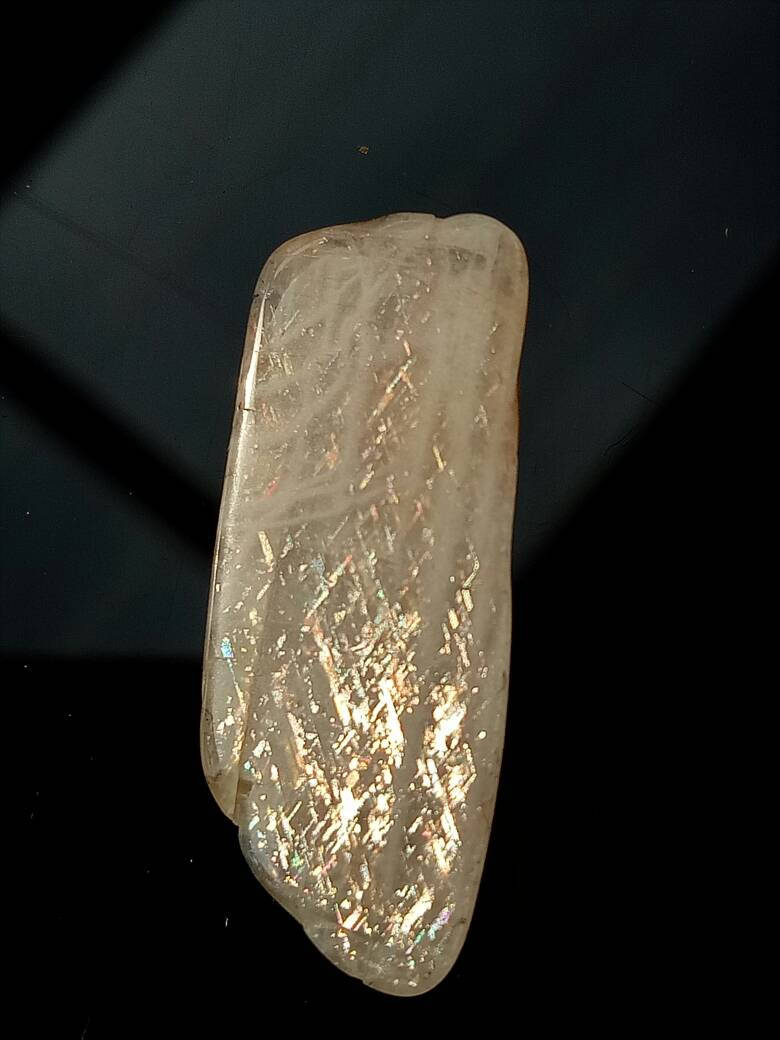
Reflection of light from the iron oxide inclusions (dark matrix, bright This means the RLS is not only a valuable gemstone for its unusualĪppearance but also a very special mineral specimen with extraordinaryįigure 1The same RLS crystal showing aventurescence (a) and adularescence (b) under reflective light from different angles. Which dramatically coarsens the lamellae texture and erases any iridescenceĮffect. Subject to hydrothermal or deuteric alteration (Parsons and Brown, 1991), More potassian bulk compositions (more than Or 80) are almost always Very rare, if not unique, for iridescent alkali feldspar because perthites with The high potassian composition (Liu et al., 2018) of RLS is Submicron, strain-controlled exsolution lamellae (cryptoperthite) in theįeldspar crystal. (adularescence) effect is also observed in RLS (Fig. 1b) at a slightlyĭifferent angle from the aventurescence, indicating the presence of “rainbow-lattice” effect in RLS (Liu et al., 2018). Hematite have been recently identified as the inclusions creating the Perfectly oriented ribbon-like inclusions that produce a spectacularĪventurescence effect (Fig. 1a) (Koivula and Gunter, 1989). Rainbow lattice sunstone (RLS) is a rare gem material that is only found inĪ pegmatite mine in the Harts Range of Australia, characterized by the

Hematite inclusions in feldspars, which may explain the enigmatic origin ofĪventurescence observed in many other sunstones and red-clouded feldspars. RLS reveals a new mechanism for the formation of the flaky Thinner magnetite films were oxidized into hematite during weathering of the Perfect lattice match at the interface with the orthoclase host. Magnetiteįilms following the specific crystallographic orientation relationship (COR)ġ 1 ‾ 0 Mt ∥ 001 Or grew to extraordinarily large sizes due to the near Likely due to the reduction of Fe 3+ to Fe 2+ in the feldspar lattice. Nucleated around the same time as the exsolution of oligoclase spindles Inclusions was not introduced by an external fluid. All theĮxsolution lamellae are pristine and strain-controlled with no signs of anyĭeuteric or hydrothermal alteration, indicating the iron in the magnetite (An 0.3Ab 11.5Or 87.3Cn 0.9) as further ordering wasĬompletely inhibited by coherent-interface strain after exsolution. Preserved the monoclinic tetrahedral framework of the orthoclase matrix Pericline-twinned albite films ( ∼ Ab 100) belowĥ00 ∘C that create adularescence. Micron-scaledĪlbite-twinned oligoclase spindles (An 27Ab 72Or 1) firstĮxsolved at ∼ 650 ∘C were followed by nanoscaled In the size and shape of the exsolution lamellae.

Stages of exsolution can be identified in RLS from the bimodal distribution Laser ablation inductively coupled plasma mass spectrometer (LA-ICP-MS) analyses show a bulk composition ofĪn 1.4Ab 14.8Or 83.0Cn 0.8 with < 200 ppmw (parts per million weight) of Fe.

Optical and electron microscopy and single-crystal X-ray diffraction (SC-XRD). Lattice sunstone (RLS) from Harts Range, Australia, are examined using Iron oxide inclusions and exsolution lamellae in rainbow


 0 kommentar(er)
0 kommentar(er)
